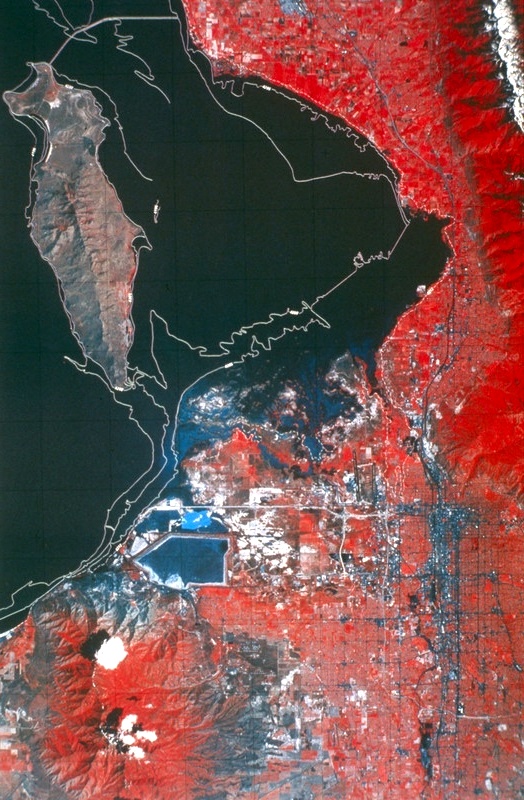The Great Salt Lake Is Vanishing
Pleistocene Lake Bonneville extent (credit: Great Salt Lake Ecosystem Project)
The Great Salt Lake is vanishing and it is happening in real time.
The once massive Pleistocene ice-age Lake Bonneville was originally the largest freshwater lake, after the Great Lakes, in the continental US. Its salty, present-day remnant, the Great Salt Lake in Utah, has shrunk to its lowest recorded level and potentially could completely dry up.
Remote sensing photography taken by NASA's Earth monitoring Landsat satellites shows the extent of the lake's decline.


Antelope Island/Farmington Bay, Great Salt Lake 1984 & 2020 (credits NASA, Landsat)
The hyper-saline lake with no outlet and is nearly 5 times as salty as the ocean. While it has no fish, the lake supports a wide diversity of birds and other wildlife. The lake's water from lake is "mined" for minerals like lithium, boron, and manganese and brine shrimp eggs are harvested for shrimp and used in fish aquaculture production worldwide. According to NASA lake level measurements,
"cities have been taking more water out of the lake's watershed than is flowing into it now, diverting ~40 percent of river waters (which would normally refill the lake) for farming, industry, and human consumption."
The western US is experiencing a mega-drought which has contributed to the Great Salt Lake's decline, now nearly 50% smaller than when permanent human settlement began 150 years ago. Utah State University determined water flowing into the lake's basin has been reduced by nearly 50% since the middle of the 19th Century, particularly from agricultural uses. Exposed saline flats, where the lake once existed, now produce volumes of fine dust when winds blow across them.
Climate change models predict increasing regional aridity and water conservation should be the 'prime directive' in western desert regions to sustain both people and wildlife. There are many reasons to hope the ancient lake can be restored to more of its former size.
WHB